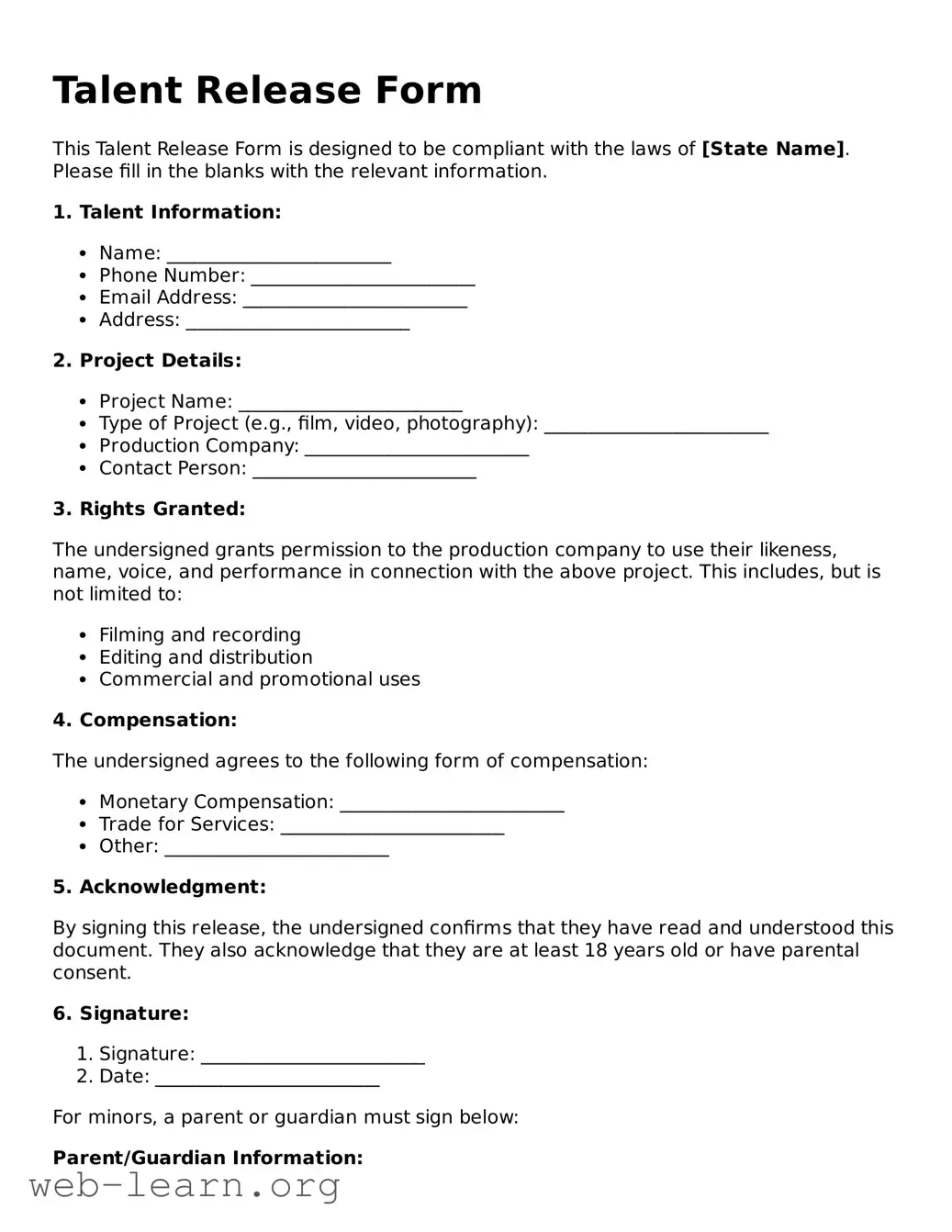Talent Release Form
This Talent Release Form is designed to be compliant with the laws of [State Name]. Please fill in the blanks with the relevant information.
1. Talent Information:
- Name: ________________________
- Phone Number: ________________________
- Email Address: ________________________
- Address: ________________________
2. Project Details:
- Project Name: ________________________
- Type of Project (e.g., film, video, photography): ________________________
- Production Company: ________________________
- Contact Person: ________________________
3. Rights Granted:
The undersigned grants permission to the production company to use their likeness, name, voice, and performance in connection with the above project. This includes, but is not limited to:
- Filming and recording
- Editing and distribution
- Commercial and promotional uses
4. Compensation:
The undersigned agrees to the following form of compensation:
- Monetary Compensation: ________________________
- Trade for Services: ________________________
- Other: ________________________
5. Acknowledgment:
By signing this release, the undersigned confirms that they have read and understood this document. They also acknowledge that they are at least 18 years old or have parental consent.
6. Signature:
- Signature: ________________________
- Date: ________________________
For minors, a parent or guardian must sign below:
Parent/Guardian Information:
- Name: ________________________
- Relationship to Minor: ________________________
- Signature: ________________________
- Date: ________________________
This form serves as a legal document. Seek legal counsel if you have questions about its contents.
